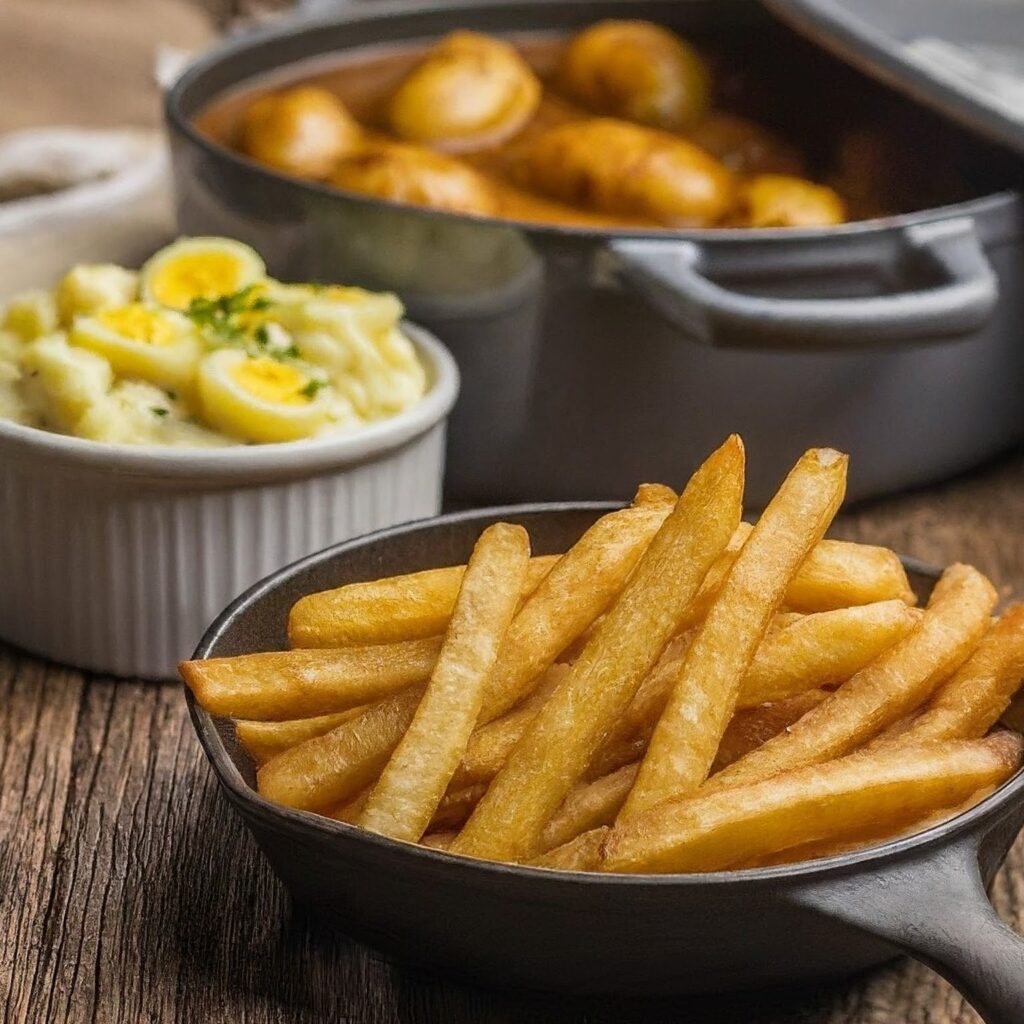Introduction to South American Cuisine
South American cuisine is a rich and diverse tapestry woven from the continent’s indigenous traditions and the influences of its many immigrant populations. From the coastal regions of Peru and Chile to the plains of Argentina and Brazil’s tropical landscapes, each country offers unique flavors and culinary traditions. The cuisine is characterized by its bold flavors, vibrant colors, and the use of fresh, local ingredients.
Key Ingredients and Flavors
South American cooking heavily relies on a few key ingredients that define its distinct flavors:
Corn:

- A staple throughout the continent, used in dishes like arepas, humitas, and tamales.
Potatoes:

- Originating from the Andean region, potatoes are a fundamental ingredient in many South American dishes.
Beans:

- Commonly used in stews and side dishes, providing a rich source of protein.
Cassava (Yuca):

- A versatile root vegetable used in many forms, including flour for baking and as a side dish.
Chili Peppers:

- Essential for adding heat and depth to dishes, with varieties like aji amarillo and rocoto being popular.
Fresh Herbs and Spices:
- Cilantro, cumin, and coriander are frequently used to enhance flavors.
Popular Dishes:
- Ceviche:

- A refreshing dish made with raw fish marinated in citrus juices, often accompanied by onions, cilantro, and chili peppers. It is particularly popular in Peru and coastal regions.
- Empanadas:

- Pastries filled with a variety of ingredients such as beef, cheese, or vegetables. They vary by country, with each region having its own unique take on the dish.
- Feijoada:

- A hearty Brazilian stew made with black beans, pork, and beef, traditionally served with rice, collard greens, and orange slices.
- Asado:

- A traditional Argentinian barbecue featuring a variety of grilled meats, often enjoyed with chimichurri sauce.
- Arepas:

- Cornmeal cakes popular in Venezuela and Colombia, typically stuffed with cheese, meats, or avocado.
Tips for Cooking South American Food at Home
- Use Fresh Ingredients:
- Fresh, locally sourced ingredients will give your dishes the authentic flavors of South America.
- Embrace Bold Flavors:
- Don’t shy away from using spices and herbs liberally to achieve the robust taste characteristic of South American cuisine.
- Experiment with Techniques:
- Traditional cooking methods like grilling, slow-cooking, and marinating are key to many South American recipes.
- Start with Staples:
- Begin with simple, foundational dishes like rice and beans or grilled meats, then gradually explore more complex recipes.
- Learn from the Experts:
- Follow authentic recipes from South American chefs and cookbooks to ensure you’re capturing the true essence of the cuisine.
Cultural Significance and History of South American Cuisine
South American cuisine is a reflection of the continent’s history and cultural diversity. Indigenous peoples have been cultivating and consuming local ingredients like corn, potatoes, and beans for thousands of years. The arrival of European colonizers brought new ingredients and cooking techniques, which merged with indigenous traditions to create unique culinary fusions. African slaves also contributed significantly to the region’s culinary landscape, particularly in countries like Brazil, where their influence is evident in dishes like feijoada.
Each dish tells a story of the land and its people, from the ancient civilizations of the Incas and Aztecs to the vibrant multicultural societies of today. Food is an integral part of South American culture, often associated with family gatherings, celebrations, and festivals.
Exploring South American cuisine is a journey through a continent rich in history, culture, and culinary diversity. By understanding its key ingredients, popular dishes, and cooking techniques, you can bring the vibrant flavors of South America into your own kitchen. Celebrate the cultural significance of this cuisine and enjoy the delicious dishes that have been passed down through generations.
